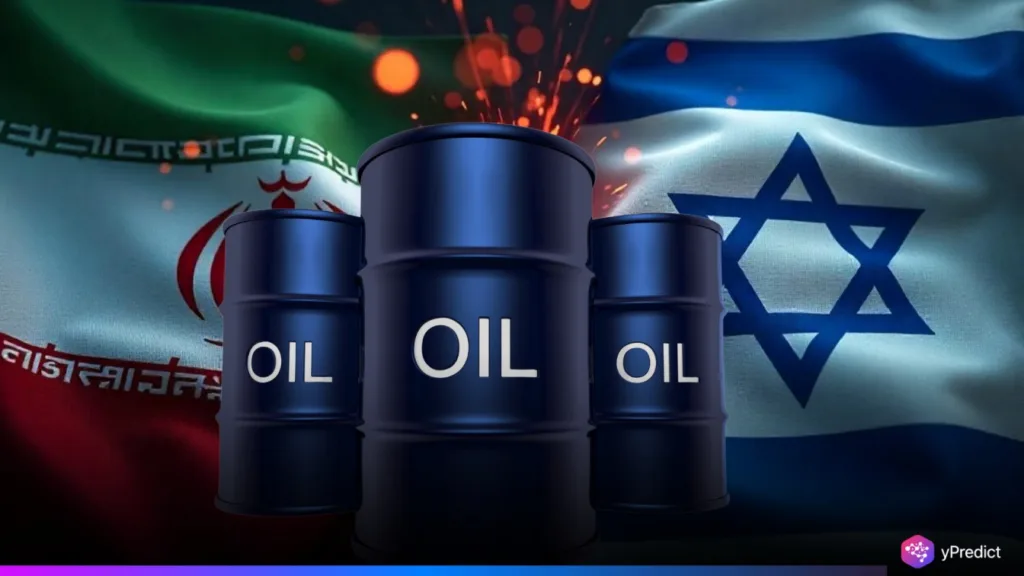
The ceasefire between Iran and Israel has jolted global markets, as oil prices fall sharply and equities surge in response. With Brent and WTI crude both down over 3%, hopes are rising that energy-driven inflation could ease, giving central banks like the Federal Reserve and European Central Bank room to reconsider rate hikes. As geopolitical tensions subside, investors and policymakers are recalibrating inflation and interest rate outlooks while focusing on the broader economic implications of the truce.
Ceasefire Calms Middle East Jitters, Drives Market Optimism
Reuters reported that global markets surged on Tuesday after U.S. President Donald Trump announced a ceasefire agreement between Israel and Iran, easing fears of prolonged conflict in the Middle East. Trump revealed via social media that both sides had committed to a “complete and total” ceasefire set to take effect within 12 hours, with the potential for the war’s official end if hostilities ceased for 24 hours.
Israeli Prime Minister Benjamin Netanyahu confirmed that Israel accepted the U.S.-brokered deal, stating its military objectives, including eliminating Iran’s nuclear and missile threats, had been met. Meanwhile, Iranian officials emphasised their participation would depend on Israel halting its attacks.
The immediate easing of geopolitical risks triggered a sharp drop in oil prices. Brent crude dropped $3.82, or 5.3%, to $67.66 a barrel by 0645 GMT, while U.S. West Texas Intermediate fell $3.75, or 5.5%, to $64.76. Both benchmarks hit two-week lows as easing geopolitical tensions erased much of the risk premium built into prices.
Monday’s losses, which exceeded 7% after Iran’s limited retaliation for U.S. strikes, had already signalled de-escalation and reduced fears of supply disruptions through the Strait of Hormuz.
Analysts noted that worries over potential supply disruptions through the Strait of Hormuz had largely subsided, erasing much of the recent risk premium in oil markets.
Energy and Financial Markets React to Cooling Tensions
The retreat in oil prices was accompanied by gains in equities and shifts in currency markets. U.S. futures pointed to a positive open, with S&P 500 and Nasdaq futures rising nearly 1% and 1.3%, respectively. In Europe, the Stoxx 600 index advanced 1.3%, led by travel and leisure sectors, while energy stocks lagged as crude prices fell.
Asian markets rallied, with Japan’s Nikkei up 1.1%, China’s blue chips gaining 1%, and Hong Kong’s Hang Seng climbing over 2%. Gulf bourses also advanced, led by Dubai, Abu Dhabi, Saudi Arabia, and Qatar.
In currency markets, the dollar weakened as risk appetite improved, falling 0.7% to 145.43 yen, while the euro rose to $1.1602. Both currencies were supported by easing energy costs, benefiting oil-importing regions like Japan and the EU.
Bond markets held steady as geopolitical tensions eased and focus shifted to monetary policy. U.S. 10-year yields hovered at 4.33%, while Germany’s stayed at 3.52%. Fed Vice Chair Michelle Bowman signalled growing support for rate cuts, with markets eyeing September as the likely timeline.
Focus Shifts to Trade Talks and Future Market Drivers
With Middle East tensions easing, investors are now focused on trade developments. Japan’s tariff negotiator, Ryosei Akazawa, is reportedly planning a late-June visit to Washington to address tariffs that have weighed on Japan’s economy. Analysts, including Prashant Newnaha of TD Securities, believe the swift resolution of geopolitical risks has raised hopes for similar progress on trade, especially with key tariff deadlines approaching.
Meanwhile, gold fell 0.6% to $3,346 an ounce as risk appetite improved. Morgan Stanley noted that while geopolitical shocks can trigger short-term volatility, equities typically rebound, with the S&P 500 averaging gains of 2% in one month, 3% in three months, and 9% over a year.







